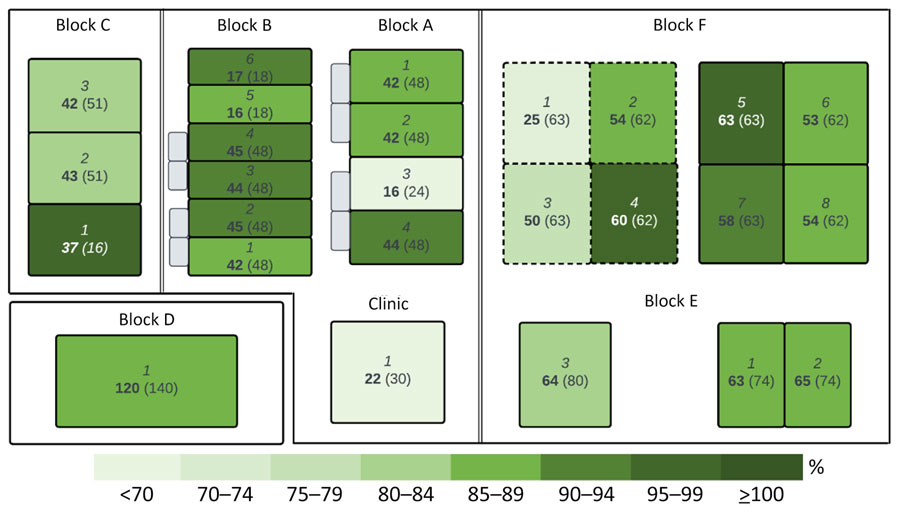Volume 31, Number 8—August 2025
Synopsis
Surveillance of Viral Respiratory Infections within Maximum-Security Prison, Australia
Figure 1

Figure 1. Stylized map of prison depicting housing capacity by wing on day of prison lockdown for SARS-CoV-2 outbreak in a maximum-security prison in Australia, 2021. Blocks A–E are general housing for incarcerated persons not in quarantine or isolation. Block F contained both general housing wings (wings 5–8) and 4 dedicated quarantine wings (wings 1–4) for persons undergoing a mandatory 14-day quarantine period before entry. Block D, the minimum-security wing, was located outside the main prison. Each wing is indicated in italics, the number of incarcerated persons is indicated in bold, and the reported maximum operational capacity is in brackets. The categorical color gradient of each unit indicates percentage of housing capacity. Quarantine zones in block F (1–4) are indicated by dashed outlines. Double lines represent internal walls. Gray shaded areas in blocks A and B represent external yard space, separated by chain-wire fencing. External yards are found in all areas but not displayed in each instance because they are contained within wings and are not considered a potential site of interwing transmission.